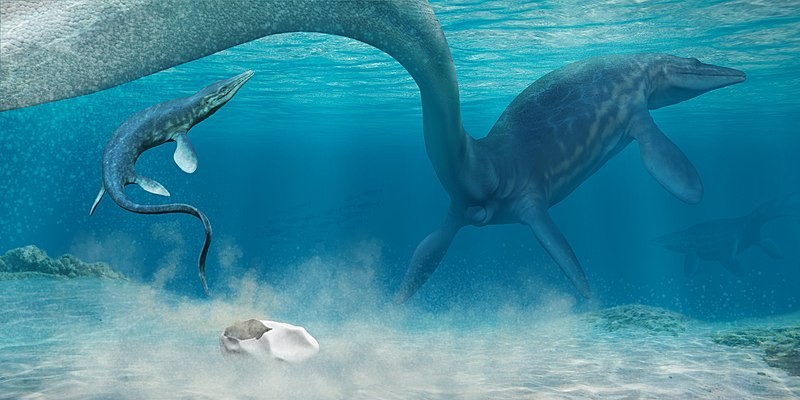An ancient giant sea lizard was discovered by researchers in an area outside Casablanca, Morocco. The findings indicate that it was a new mosasaur species that has never been seen before but lived in the North African country until the apocalyptic event of 66 million years ago.
Through its fossilized remains, the scientists also found the remains of its prey, killed by the massive jaws and teeth of the giant sea reptile.
Ancient Giant Sea Lizard

In a new research conducted by the University of Bath, the new mosasaur species named the extinct animal as Thalassotitan attrox, which likely hunted other marine reptiles like plesiosaurs, sea turtles, and other mosasaurs.
The new paper was published in the journal Cretaceous Research on Wednesday, August 24, which confirmed the presence of sea monsters who lived alongside the dinosaurs on land. However, the latter is more explored compared to the former.
According to Dr. Nick Longrich, the study's lead author and senior lecturer at the University of Bath, it is a "circumstantial evidence" and they cannot assert in an absolute manner which animal species killed all the other mosasaurs, as cited by Science Daily.
What is the Mosasaur?
According to the National Park Service (NPS), mosasaurs are a group of ancient marine lizards that lived and dominated the ocean during the Cretaceous Period, between 82 to 66 million years ago. If dinosaurs dominated the land, the ancient giant sea lizards were the apex predators of the oceans when they were still alive.
Reaching lengths of up to 50 feet, the ancient reptiles is comparable to the length of a bus and would eat anything in their path, the NPS adds. Once a terrestrial animal, the mosasaurs developed its webbed paddles for swimming when it evolved to live in waters.
While the Chicxulub asteroid killed the mosasaurs and their dinosaur cousins at the end of the Cretaceous Period, the descendants or modern relatives of the mosasaurs are snakes and monitor lizards, where both of which live on land.
The US agency adds mosasaurs could have adapted to freshwater environments by the end of the Cretaceous Period, saying it is possible due to the abundance of prey in such ecosystems. However, scientists believe the creatures are more equipped to in deep waters due to their body size.
In the past, paleontologists have discovered the fossilized remains of mosasaur stomachs, which contains food like fish, birds, sharks, cephalopods, and even other mosasaurs.
First Discovery
The mosasaur (Mosasauridae) belongs to the order Squamata, which includes lizards and snakes.
In the past 250 years, mosasaur fossils have been discovered in parts of Africa, North America, South America, Africa, Europe, Western Asia, and Antarctica. In the United States, most of their fossilized remains have been most often found in the states of Kansas and South Dakota.
This comes after their fossil remains were discovered in a limestone quarry or chalk quarry near the Maastricht, Netherlands, in 1764. Initially identified as a whale, scientists postulate the mosasaurs possibly evolved from an extinct group of aquatic lizards called aigialosaurs in the Earliest Late Cretaceous.
© 2026 NatureWorldNews.com All rights reserved. Do not reproduce without permission.





